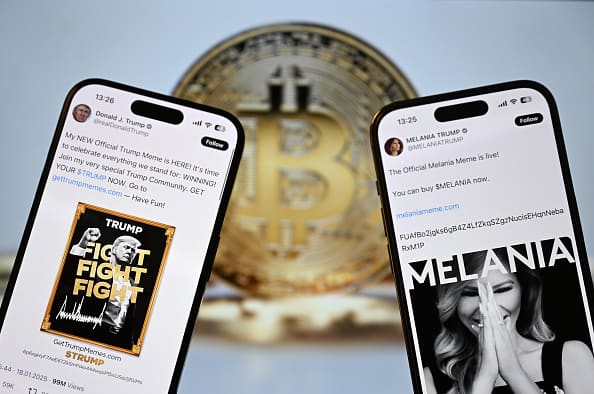
The cryptocurrency market has always been a breeding ground for speculative frenzies, but few have captured public attention quite like the $TRUMP meme coin. Launched on the Solana blockchain, this digital asset tied to the former U.S. president has become a case study in the volatile intersection of politics, celebrity influence, and decentralized finance. What began as a seemingly strategic move to position Donald Trump as a crypto-friendly leader has spiraled into a cautionary tale about market manipulation, wealth disparity, and the dark underbelly of unregulated digital assets.
The Pump-and-Dump Dynamics of Celebrity Coins
At its core, the $TRUMP token exemplifies the classic “pump-and-dump” scheme turbocharged by political clout. Early investors—many reportedly connected to Trump’s inner circle—raked in profits exceeding $10 million per wallet according to Chainalysis data. Meanwhile, over 200,000 small traders found themselves holding the bag, their losses totaling a staggering $2 billion across 813,000 wallets. This 1000:1 wealth transfer ratio exposes memecoins for what they truly are: financial landmines dressed up as democratic investment opportunities. The project’s whitepaper might as well have been printed on bubble wrap—shiny on the surface, designed to pop on contact with reality.
The Ethical Quagmire of Political Crypto Ventures
When politicians moonlight as crypto promoters, the conflict of interest isn’t just apparent—it’s institutionalized. The Trump team’s simultaneous rollout of campaign NFT collections and Solana-based tokens created a perfect storm of grift. Unlike traditional securities where insider trading laws apply, these meme coins operate in a regulatory gray zone where politicians can legally front-run their own supporters. Copycat scams quickly flooded the market, with fake “Melania Tokens” and “Trump2024” knockoffs demonstrating how easily political branding becomes weaponized in crypto’s wild west. Even the project’s purported “pro-crypto” stance rings hollow when the fine print reveals centralized control over token distribution.
Crypto’s Recurring Inequality Problem
Beneath the laser-eyed avatars and “to the moon” rhetoric, the $TRUMP saga reinforces crypto’s dirty secret: it amplifies wealth inequality rather than solving it. Chainalysis data shows 90% of wallets gained less than $100, while 0.01% of holders captured 45% of total profits. This isn’t financial liberation—it’s a digital feudal system where political insiders and venture capitalists play the role of modern-day robber barons. The Solana blockchain’s low transaction fees theoretically enable broader participation, yet in practice, they simply allow whales to manipulate markets with surgical precision. When a single tweet from Mar-a-Lago can trigger 300% price swings, retail traders aren’t investors—they’re liquidity providers for the elite.
The $TRUMP token will likely be remembered as crypto’s Lehman Brothers moment—a spectacle so brazen it forces mainstream reckoning. Its legacy isn’t just financial wreckage, but the uncomfortable questions it raises: Should politicians be allowed to monetize their influence through unregulated assets? Can decentralized networks truly democratize finance when human nature inevitably recreates old power structures? As regulators finally circle this space with scrutiny, one truth becomes self-evident—in the carnival of meme coins, the house always wins. And in this case, the house flew a flag with golden letters reading “TRUMP.” The only bubble that hasn’t burst? The one insulating the architects of these schemes from consequences.






